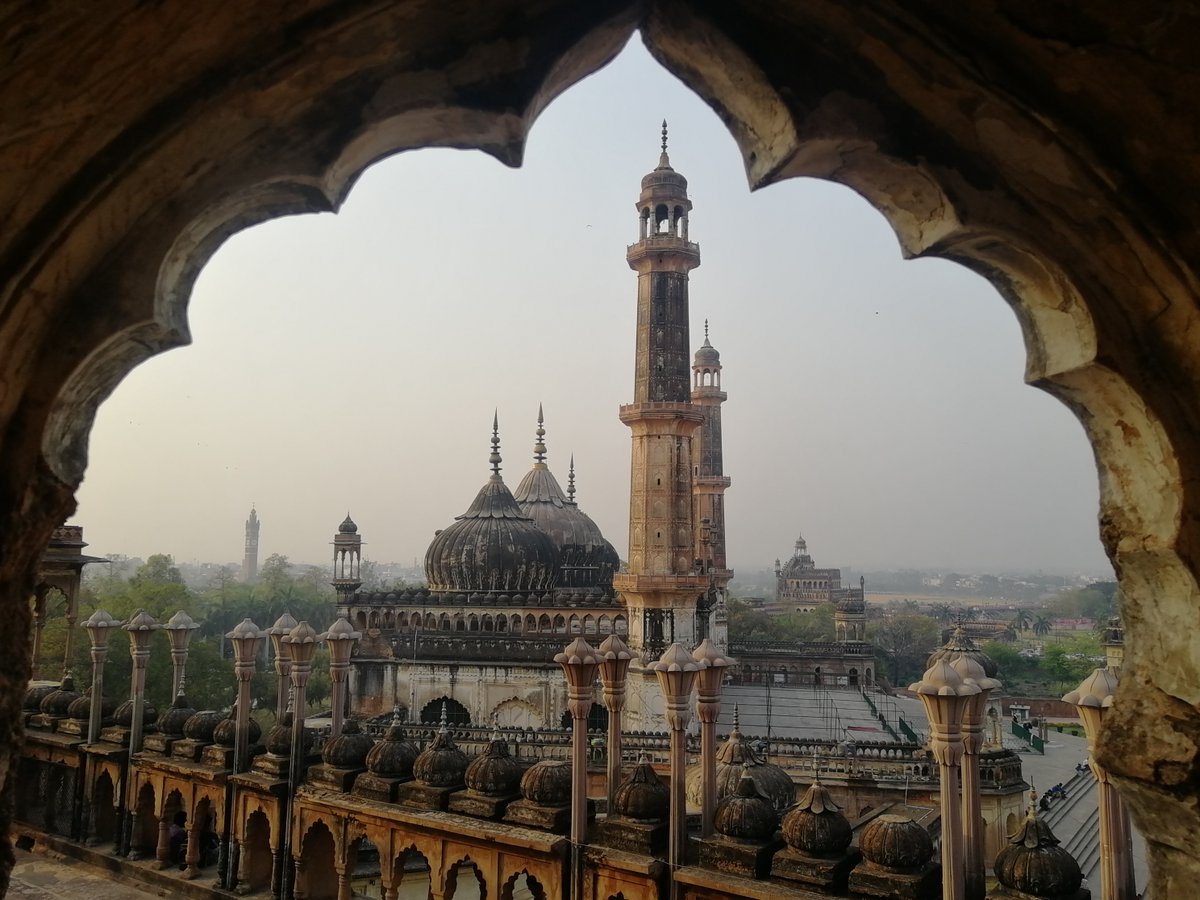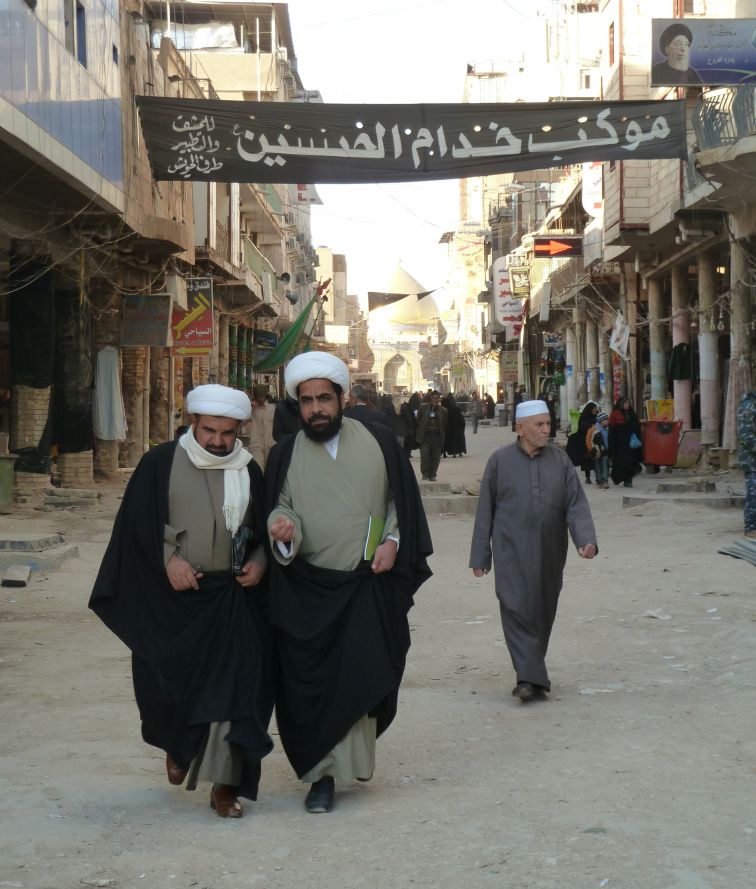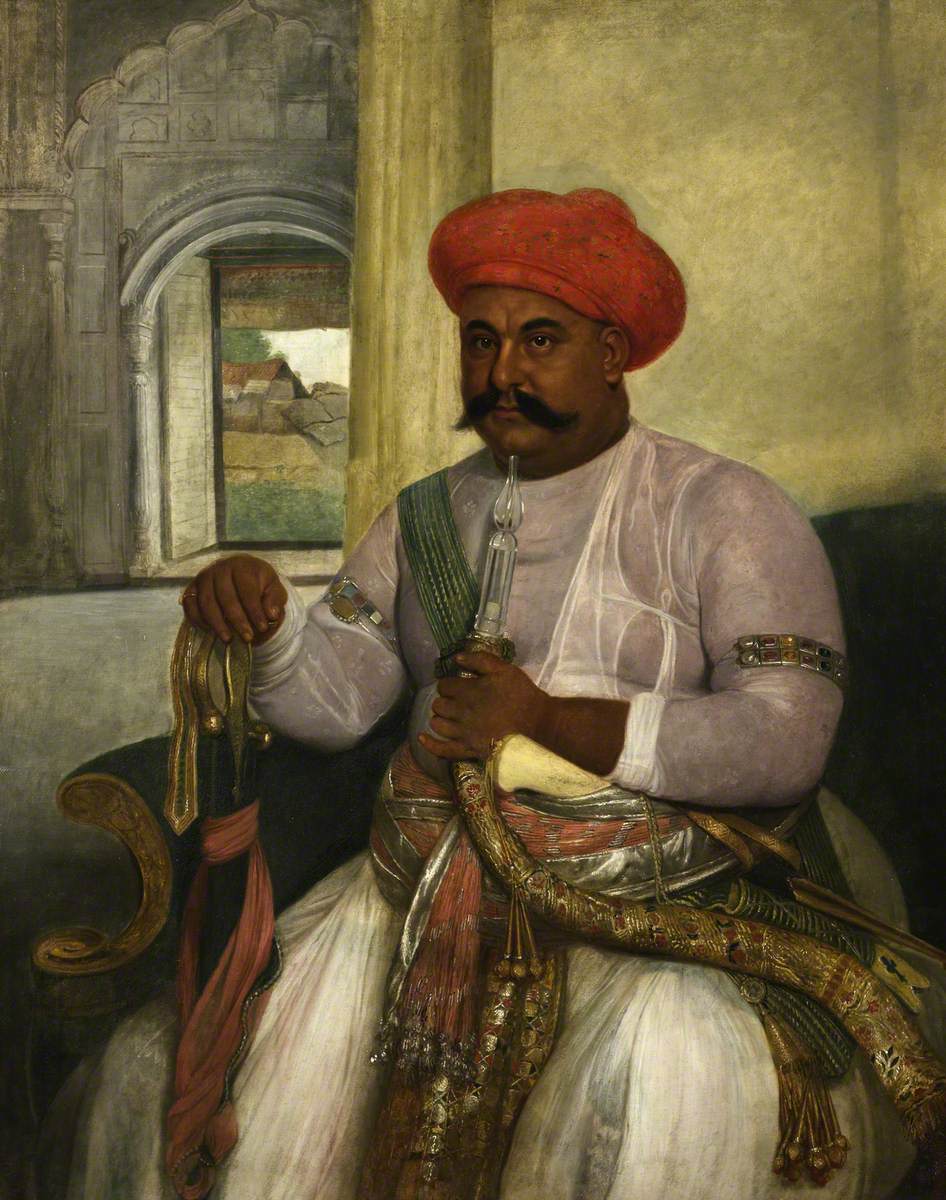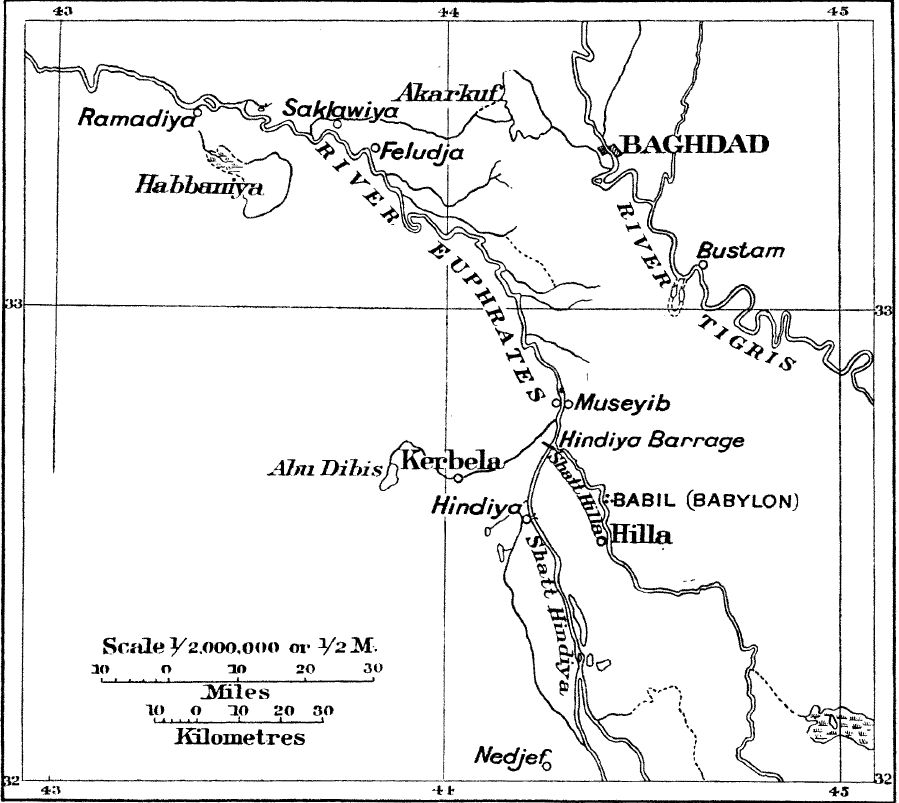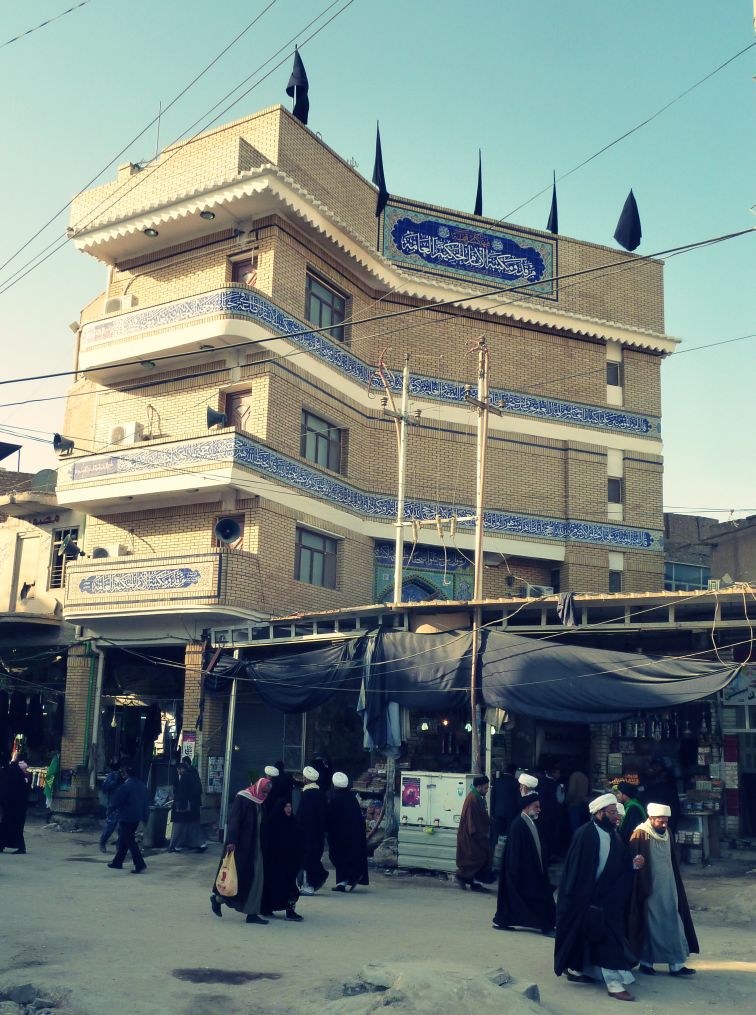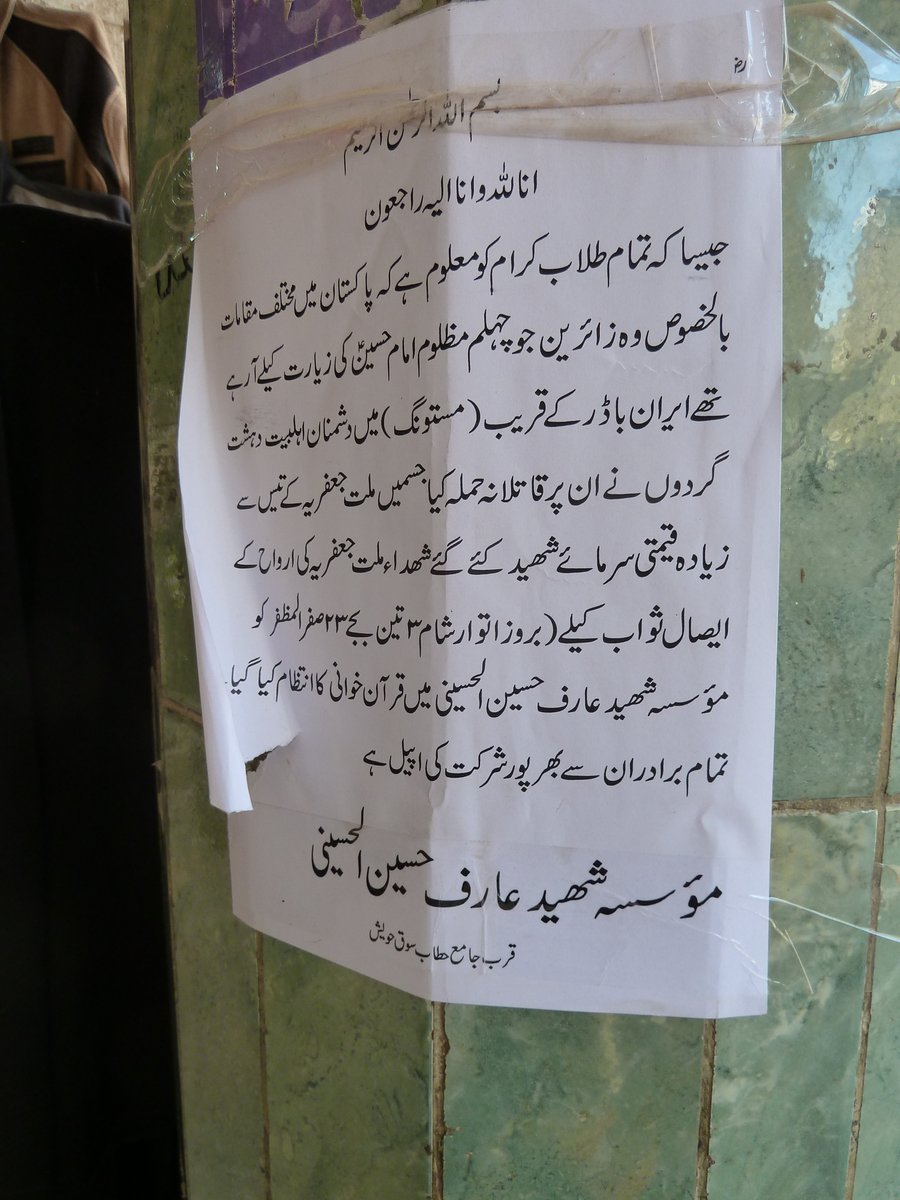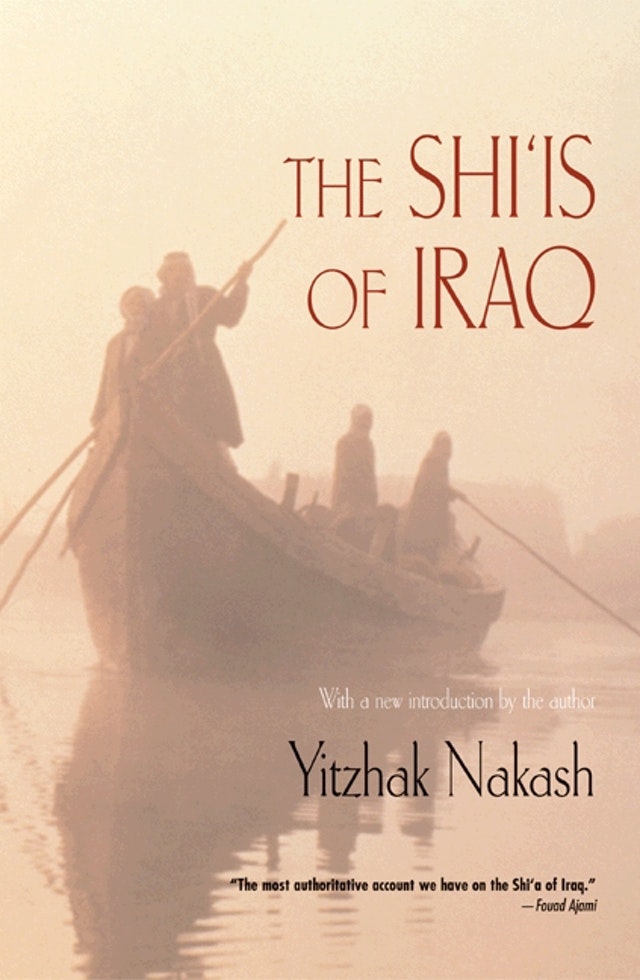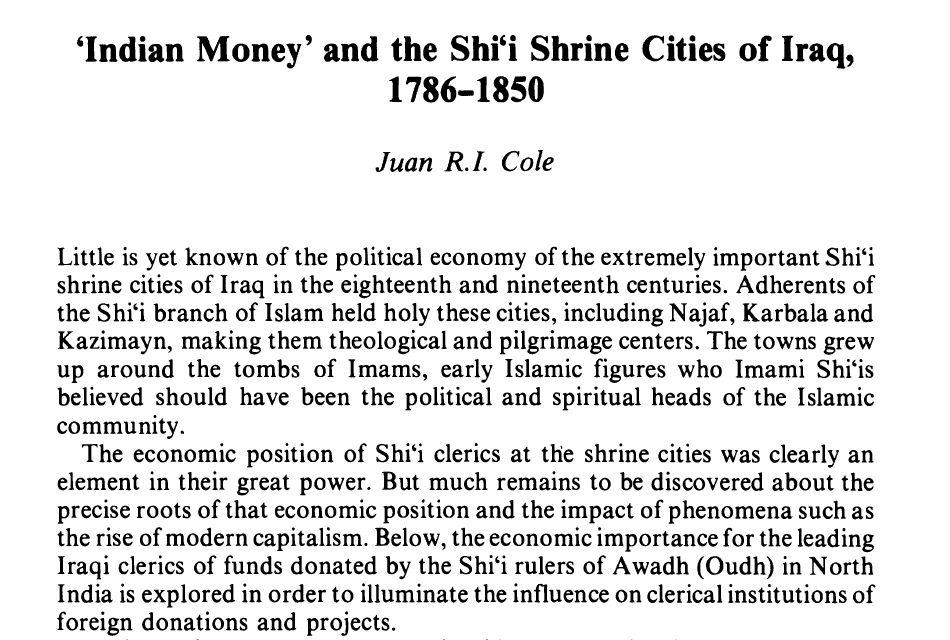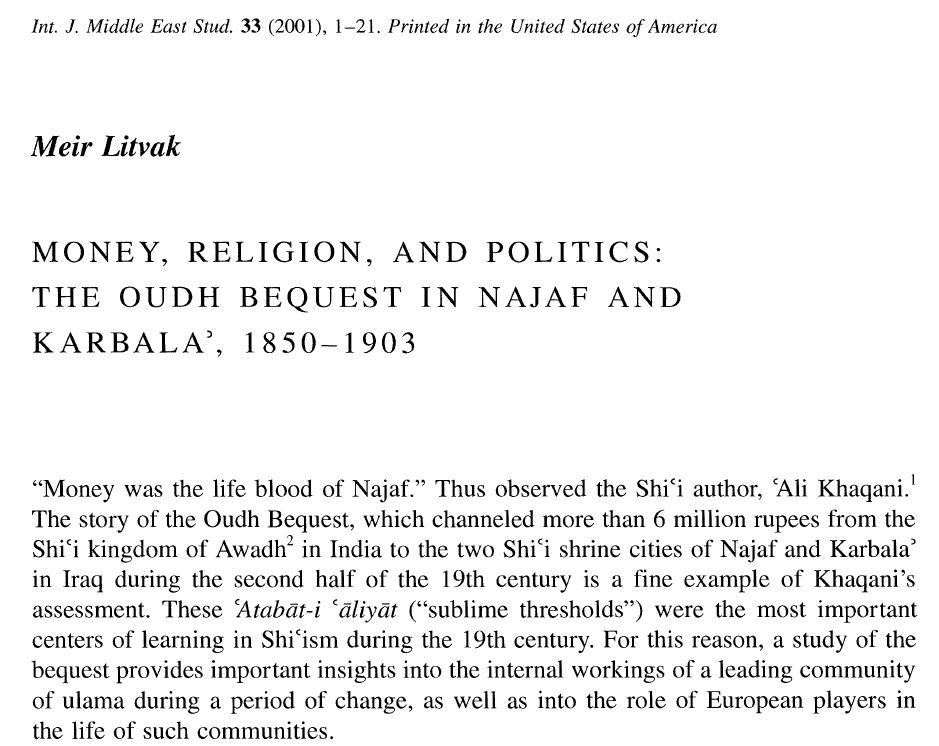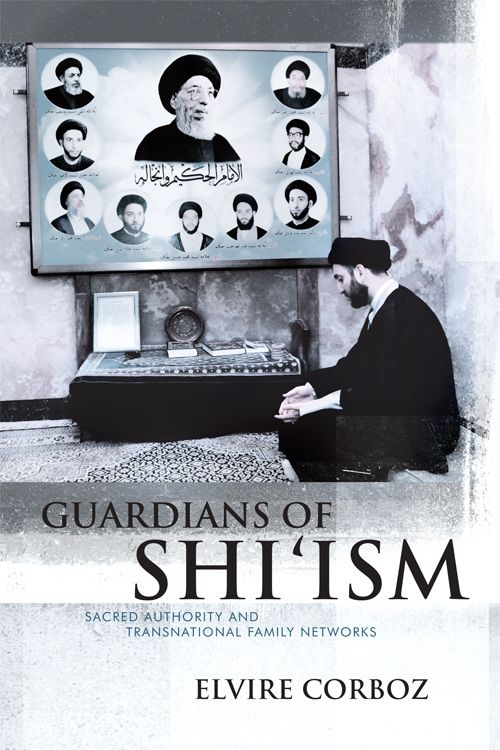1/9 Modern Shi’i Islam as we know it would not exist without South Asia. It all starts in #Lucknow in North India. From 1775-1856, the city was the capital of the state of Awadh (or Oudh). Its Shi’i rulers, the nawwabs, used splendid architecture to propagate their faith.
2/9 #Najaf in Ottoman Iraq, by contrast, was then far from the bustling global center of Shi’i learning and pilgrimage that it is today. This is not to downplay the city’s historical importance due to the shrine of Ali b. Abi Talib (d. 661), the fourth caliph & first Shi’i Imam.
3/9 Yet, before the 19th century, Najaf faced two constant and existential threats: 1) raids by Arab tribes and 2) the lack of any reliable water supply. The Portuguese traveler Pedro Teixeira describes the place as ruined and “declined in every way” in 1604.
4/9 Despite all efforts, such as by the Safavid ruler Shah Abbas I in 1623, aqueducts kept silting up. Things only changed in 1780 when Awadh’s Chief Minister Hasan Reza Khan donated Rupees 500,000. With this Indian money, Najaf’s new Hindiyya canal became operational after 1803.
5/9 The consequence was a complete reversal of fortune for Najaf. Massive number of pilgrims could now be sustained. Even more important, Arab tribes were attracted to the area and converted to Shi’i Islam. This development made #Iraq a majority Shi’i region until today.
6/9 A separate “Oudh Bequest” from Awadh paid stipends to 1,200 Iranian & Arab students in Najaf in the 1850s. The fund enhanced the religious standing, opportunities for patronage, & transnational reach enjoyed by the city& #39;s leading Shi’i clerical families in unprecedented ways.
7/9 From the late 19th century, Najaf became a sanctuary for oppositional Iranian Shi’i scholars. In Iraq, they could voice their opposition to (reformist) policies back home. The most famous example is Sayyid Ruhollah #Khomeini, who resided in Najaf from 1963-1978.
8/9 Since Saddam Husayn& #39;s fall in 2003, many Indian & Pakistani students have returned to Najaf. In my 2013 photo, you can see the Urdu ad for a commemoration, hosted by an organization named after S. Arif Husayn al-Husayni, #Pakistan’s most important Shi’i leader of the 1980s.
9/9 If you’d like to know more about Najaf’s (complicated) South Asian connection & its consequences, I can highly recommend these works by great colleagues, such as @jricole. If you enjoyed this thread, give me a follow @Simon_W_Fuchs. Thanks!~swf #twitterstorians #twittistorian

 Read on Twitter
Read on Twitter